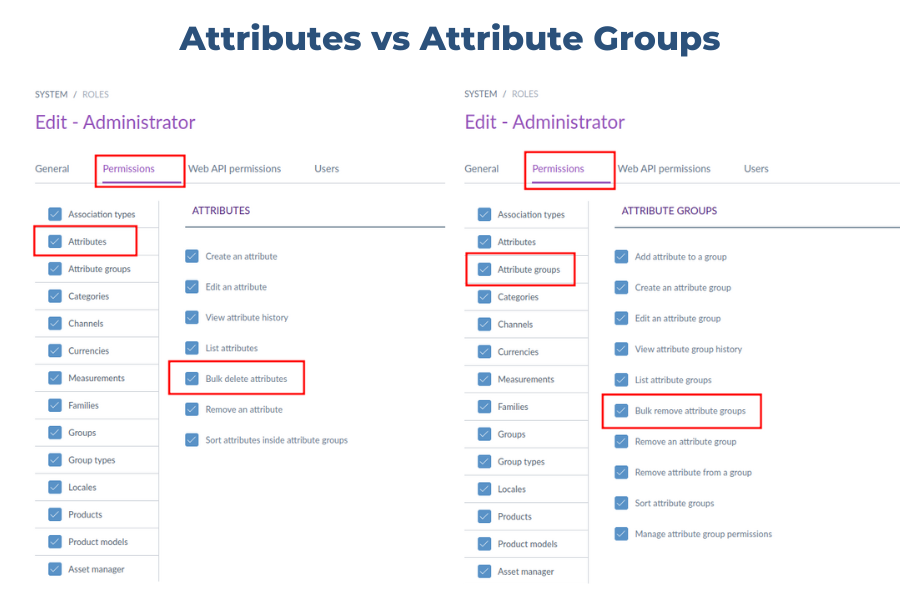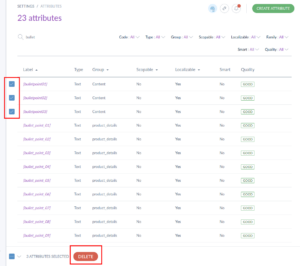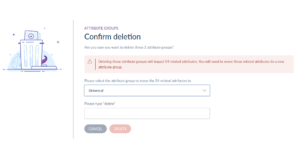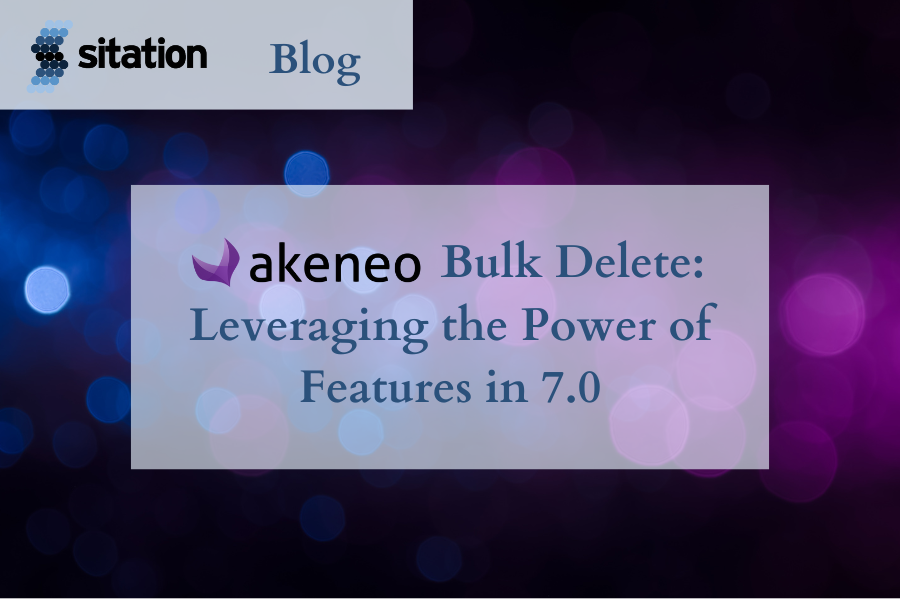Bulk Delete: An Akeneo Philosophy Shift
Time and time again we see Akeneo listen to users, implementers and PIM champions alike, and add requested functionality to updated editions. Akeneo 7.0 is no exception.
In the past, Akeneo made critical design decisions to protect Akeneo data. This included reduces the chances of erasing information, intentionally or accidentally. The platform’s philosophy around deleting PIM data was to limit users as much as possible. While this has been historically true, to the 6.0 release of Akeneo provided some limited control in the users ability to eliminate information.
One example of this limited delete functionality is that through the API you could only delete products and assets, and from the API they could only be deleted 1 at a time. Recently, however, this philosophy has shifted away from policing deletes and toward allowing users to perform powerful delete actions without minimization.
The 2022 Akeneo 6.0 release included bulk deletes for Assets and Reference Entity Records. Now, with Akeneo 7.0 or Serenity, users have the ability to bulk delete Attributes and Attribute Groups from the UI.
As someone that is busy working within the back end of the platform and doesn’t closely follow Akeneo’s releases this update may have slipped between the larger announcements of major feature releases. It may even have gone unnoticed by the employees that work on the PIM every day, since by default the permission to perform these new bulk delete actions is disabled.
How to Use Bulk Delete Features
Lets start at the top with how to use this expanded powerful feature.
To enable these bulk delete features simply go to System > Roles and select the role you’d like to grant bulk delete privileges to.
From the “Permissions’‘ tab select either “Attributes” or “Attribute groups” and select the check box for “Bulk delete attributes” or “Bulk remove attribute groups”.

Once you’ve selected the permissions simply click “Save”. Bulk deletes of Attributes and Attribute Groups operate in a very similar way to other Akeneo bulk delete processes.
Simply navigate to the Attributes or Attribute Groups section of the PIM, select the check boxes next to the items you’d like to delete, then hit the red “Delete” button at the bottom of your screen.

You’ll then be prompted with a confirmation screen.

Simply enter the requested prompt and click the red “Delete” button again. In the case that you’re trying to delete an Attribute Group with existing attributes you’ll also need to choose a new attribute group for those attributes to live.
As with most Akeneo processes, confirming the delete action will trigger a job in the background and you’ll be alerted when the job has completed. Information about the job can be found in the Akeneo Process Tracker.
Remember that with great power comes great responsibility. Deletes in Akeneo are permanent and bulk deletes, of anything in the platform carries some inherent risks. It will be important that organizations have properly set up user roles to prevent any accidental or malicious deletes.
Deletes in Akeneo are permanent.
Overall, though, this movement toward giving organizations more power to quickly and easily delete elements from Akeneo is a good one. As someone that works on Akeneo every day these quality of life improvements can be just as impactful as the major new features.
Akeneo Updates
For more on recent updates, check out this quick reference from Akeneo. Also, stay tuned for forthcoming blog by Sitation Solutions Consultant, Joseph Purayidathil to further examine updates around Time-to-Market insights.
Contact us for information on how our certified Akeneo experts can help you access and leverage new features within your Akeneo instance.




